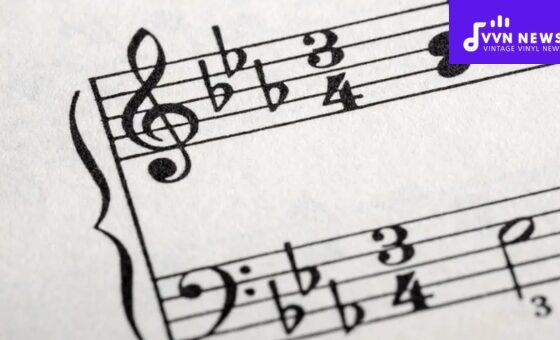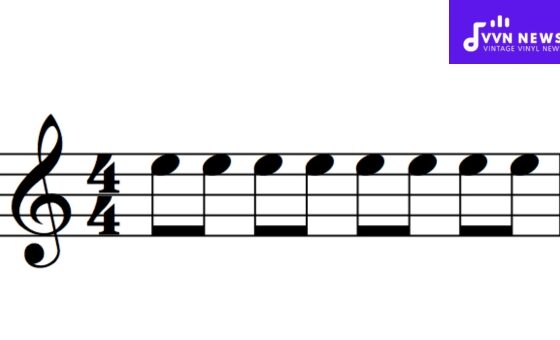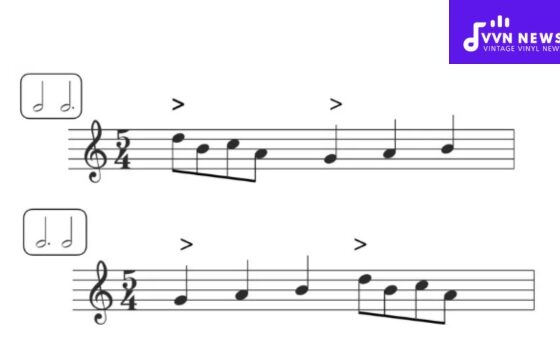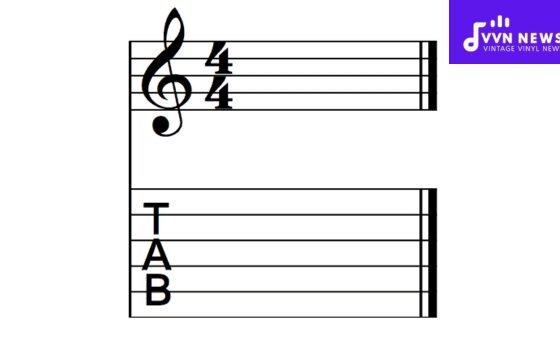Music, in its endless forms and variations, is often compared to a language. One of its fundamental elements is the time signature, and a somewhat peculiar but fascinating one is the time signature 9/4.
Like letters that make up words and sentences, this rhythmic pattern plays a role in how we interpret and experience music. You might be wondering what sets the time signature 9/4 apart from others.
It’s not as common as 4/4 or 3/4 yet it provides an intriguing rhythmic structure that caters to complex musical pieces.
Often used in classical music or experimental contemporary genres, this unique signpost guides musicians through lengthier musical phrases while offering composers exciting avenues for creativity.
What Defines a 9/4 Time Signature?
In music notation, the 9/4 time signature is both fascinating and rare. It indicates that each measure or bar contains nine quarter-note beats. Musicians interpret this as a compound time, typically in the format of three sets of three beats.
This divides the measure into clear groupings, often accentuated by chord changes or melodic cadences within compositions.
Unlike more standard signatures, it’s this particular rhythmic structure that lends itself to expansive musical phrases and a distinct ebb and flow that can be both challenging and rewarding for performers and composers alike.
Also Read: E Minor Pentatonic Scale [How To Use In Your Music Composition]
How is Time Signature 9/4 Counted?
To count in 9/4 time, visualize the measure divided into three groups of three-quarter notes.
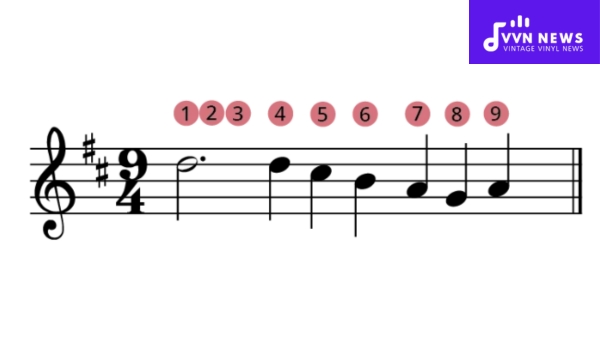
Instead of a steady “1-2-3-4,” the counting extends to nine beats: “1-2-3, 4-5-6, 7-8-9.” Each group represents what one might compare to a bar within a larger bar.
Think of it like counting sets in an exercise routine. You’re not merely counting reps; you’re combining sets seamlessly. Here’s how it breaks down:
- Start with the first beat, your strong downbeat—”1.”
- Continue with lighter beats—”2″ and “3.”
- Repeat for the subsequent groups—”4-5-6″ and “7-8-9,” emphasizing the first beat of each triad.
This emphasizes a compound time signature, with each primary beat subdivided into threes.
While tapping out rhythms or using a metronome, consider each numbered count as your metrical guideposts through the musical landscape defined by this captivating asymmetric rhythm pattern.
What Marks the Style of 9/4 as a Compound, Triple Time Signature?
The 9/4 time signature is distinctive because it is a compound time signature with a triple-meter feel. This essentially means that each bar can be divided into three groups, and each of these groups contains three-quarter notes—or their equivalent in other note types.
Musicians often count 9/4 in a pattern like 1-2-3, 2-2-3, and 3-2-3, emphasizing the first beat of each group to maintain the rhythm’s flow. This compound nature affords pieces a broader space for melodic and rhythmic development compared to simpler signatures.
It lends itself to creating an expansive feel in music which can be both grandiose and inherently driving.
Artists leveraging 9/4 typically possess a strong grasp of rhythm to manage this complex structure effectively.
The underpinning triplet subdivision propels compositions forward and wraps listeners into an intricate musical journey filled with potential surprises and expressive depth.
Also Read: E Minor Pentatonic Scale [How To Use In Your Music Composition]
How is 9/4 Time Distinct from 9/8 Time?
The core distinction between 9/4 time and 9/8 time lies within their beat division and the context in which they are used.
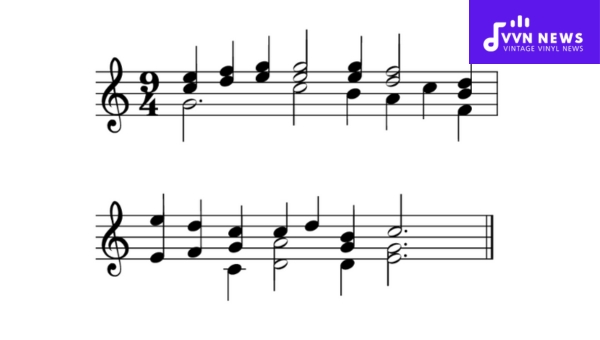
Beat Structure
In 9/4, the beats are measured in quarter notes, typically grouped into three sets of three.
This gives a broader, more prolonged feel to each measure, with each beat feeling like a continuous pulse.
Conversely, 9/8 is constructed with eighth notes, giving a sense of rapidity and flow to the rhythm, as it’s grouped in triple meter patterns such as 3+3+3 or even more intricate divisions like 2+2+2+3.
Musical Phrase Length
A measure of 9/4 encompasses longer phrases than 9/8. Since quarter notes get the beat in 9/4, each musical phrase stretches out longer before repeating or moving to the next phrase.
Tempo Implications
Owing to its larger note value for beats, 9/4 often has a slower tempo marking compared to the brisker pace one might associate with the smaller note value of beats found in 9/8.
Subdivisions Usage
Another notable contrast is how composers approach subdivisions within these signatures.
In 9/4, musicians are frequently counting out full quarter-note subdivisions, whereas 9/8 naturally falls into quicker eighth-note subdivisions.
Context and Genre
You’ll typically find that composers opt for 9/8 within pieces that demand agility and quick steps – think along the lines of folk dances.
Meanwhile, you are more likely to encounter 9/4 in compositions that require grandeur and width – moments where music needs space to breathe expansively.
By grasping these key points of divergence – from beat structure to contextual usage – musicians can adeptly navigate between these signatures and adapt their playing or composing strategies accordingly.
Also Read: F Sharp Major Triad [Enhance Your Musical Compositions]
Examples of 9/4 Time in Songs
As an enigmatic time signature, 9/4 presents a captivating rhythmical landscape.
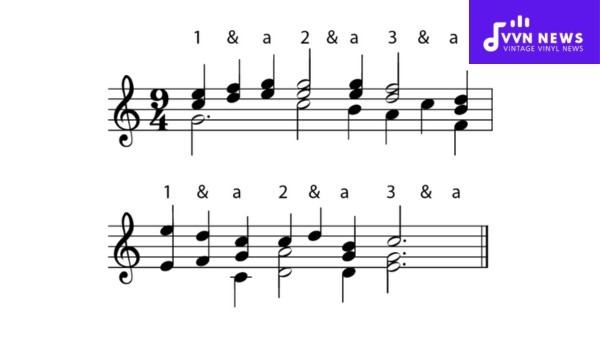
Although not commonplace, there are remarkable examples where musicians have harnessed their allure to create distinctive songs.
“The Fountain of Lamneth“
Rush, in their progressive rock epic, effectively utilizes the 9/4 time in parts of their song “The Fountain of Lamneth.”
Featured on the album Caress of Steel, one can impart the elongated flow characteristic to this time signature.
“Esther’s Nose Job“
Soft Machine’s Third, “Esther’s Nose Job” is a testament to the band’s jazz and progressive rock fusion.
With shifting time signatures, this piece traverses through musical territories with 9/4 as a stepping stone within its complex structure.
“Happiness is a Warm Gun“
While not entirely in 9/4, The Beatles’ “Happiness is a Warm Gun” includes sections that embody this rhythmic pattern.
Off their White Album, it showcases the group’s willingness to explore unconventional musical terrains.
“All You Need is Love“
Another Beatles classic from the album Magical Mystery Tour intricately weaves a tapestry of time signatures with segments emphasizing the unique phrasing opportunities provided by 9/4.
“River Man“
Nick Drake, known for his intricate guitar work and poignant lyrics, employed 9/4 timing within his song “River Man,” from Five Leaves Left. His melodically rich tune gracefully rides upon the nine-beat cycle, lending it an ethereal quality.
These songs exemplify how artists across genres have embraced the layered depth offered by 9/4. Surely an intricate beat pattern adds to each piece’s memorable character and emotional contours.
Also Read: A Sharp Minor Pentatonic Scale [Unique Harmonic Possibilities]
FAQs
What is a time signature?
A time signature indicates how many beats are in each measure and what note value (quarter note, eighth note, etc.) constitutes one beat.
Why is 9/4 considered unique in music composition?
9/4 is unique because it allows for complex and extended musical phrases, helping to create a distinctive and often dramatic rhythmic flow.
Is 9/4 time used in popular music?
While not common, some progressive rock and experimental artists incorporate 9/4 to add rhythmic diversity to their pieces.
Can you clap out a 9/4 rhythm for practice?
Absolutely! Clap nine times, evenly spaced, with an emphasis on the first beat to feel the flow of a 9/4 time signature.
Where can I find sheet music with a 9/4 time signature?
Sheet music with a 9/4 time signature may be more prevalent in classical collections but can also be found through online sheet music databases.
Also Read: Harmony In Music [Enhance Your Compositions With These Tips]
Conclusion
The 9/4 time signature is a rich musical canvas ripe for exploration. It offers both challenge and charm, with its nine beats per measure pushing the boundaries of rhythm and melody.
By now, you should feel more confident in identifying this signature and perhaps even experimenting with it in your musical journey.
If you’re a listener enjoying the complexity it brings to a piece, or a composer seeking to weave intricate rhythms, that 9/4 carries a unique tempo that can transform any composition into an unforgettable auditory experience.





